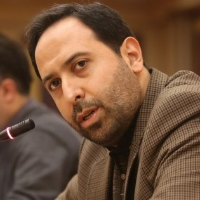Irrigation System of Agricultural and Garden Lands during the Saljuqids Period According to Wittfogel's Theory of Oriental Tyranny
Author(s):
Article Type:
Research/Original Article (دارای رتبه معتبر)
Abstract:
This article describes the actions and practices of The Saljuqids in the irrigation system of agricultural and garden lands. The land of Iran is of great importance due to the vastness and diversity of climates among Islamic lands, The southern half and some eastern regions of Iran due to lack of rainfall and tropical climate have always created problems for farmers throughout history that The Saljuqid rulers were no exception to this rule and given that the income from agriculture was vital for them; so they were looking for solution In this regard, The question arises how The Saljuqids performed in the management of the irrigation system? The resulting hypothesis is that The Saljuqids managed the issue of water shortage due to climatic conditions as well as prioritizing water-scarce areas that were economically important. This article examines the dimensions and angles of the subject using historical research method based on description and analysis. This article examines the dimensions and angles of the subject using historical research method based on description and analysis according to Wittfogel theory. The findings of the research show that most of the time, especially in the era of decadence, Saljuqids dug wells and built aqueducts only in places where they cultivated special and rare products such as some tropical fruits, because the sale of such products made So that more incomes will enter The Saljuqids sultan's treasury and compensate the liquidity deficit to some extent. However, the huge cost of land irrigation equipment was borne by the farmers, which caused them dissatisfaction.
Keywords:
The Saljuqids , Land Irrigation , Dams , Aqueducts , Wells
Language:
Persian
Published:
History of Villages and Rural Settlements in Iran and Islam Journal, Volume:1 Issue: 3, 2023
Pages:
127 to 149
https://magiran.com/p2794109
مقالات دیگری از این نویسنده (گان)
-
Content Comparison of the Maqtal of Biḥār al-ʾAnwār with the authentic early Maqtals (case study: the Maqtal of Abu Mikhnaf and Irshad of Shaykh al-Mufid)
Abbas Boroumand A'lam*, Saber Zarei
Quartely Research Journal of Islamic History, -
positivist horizons in Iranian Islamic historiography
Amir Hossein Hatami *, Meysam Akbarzadeh
Journal of Epistemological Research, -
The fall of the Khwarazmshah dynasty from the point of view of historians of the Ilkhanid era
Mohammad Ghorbanian, Abdorrafi Rahimi *, Nasrallah Pourmohammadi Amlashi, Amirhosein Hatami
Jostarha-ye Tarixi, -
Analyzing trade union and political activities of teachers and students of Qazvin province in the process of victory of the Islamic revolution1978- 1979
Yaser Karimi Gilaye *, Bagher Ali Adelfar, Hojjat Fallah Tootkar, Mohsen Bahram Nejad
Jostarha-ye Tarixi, -
Investigating the Scholarly Performance of Mujāhid ibn Jabr, Muhammad ibn Ka'b Qarẓī, and Ḥasan Baṣrī, as Mawālī Exegetes of the Followers Era
Tal’At Deh Pahlavan *, Pouria Esmaili, Mansour Nikpanah
Journal of Quran, Culture and Civilization, -
The concept of Mahdism in the realization of Islamic civilization from the perspective of the leaders of the Islamic Revolution Iran
Talat Dehpahlevan *, Mansour Nikpanah, Seed Mohammadamin Hoseini,
Mashreq-e Mouood, -
Comparison of the Approach of Seljuks of Iran and Fatimids of Egypt in Handing the Lands Over
*, , Mohsen Bahram Nezhad,
Hostory of Islam, -
Analyzing Factors of Political Isolation of the Apardians in the Timurid Government
*, Alireza Sarijloo
Journal of Historical Researches,





